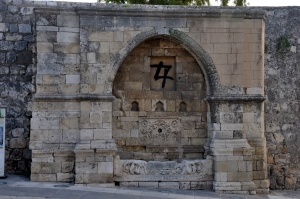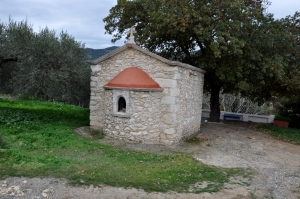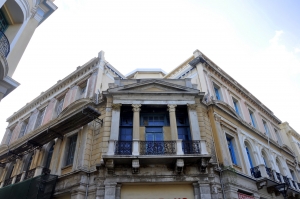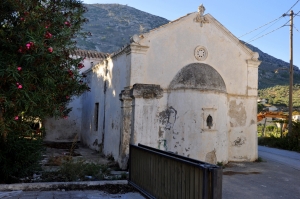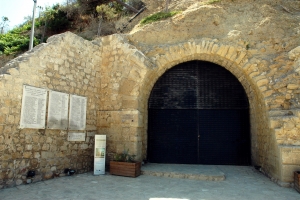The fountain of Yenitsar Aga is located at the beginning of the Avenue Ikarou, below the epigraphy collection and opposite the Archaeological Museum. It was originally embeded outside a beautiful mansion on the corner of the streets Markou Avgeri and Paleologou, which was demolished in 1980.
The temple of Saint Ekaterini (Agia Aikaterini) is located in a short distance from Aghios Nikolaos of Splantzia. It is a two-aisled structure with a front that ends to a gable. The base of the bell-tower can still be seen in the yard. The door-frames are supported by chiseled pseudo-pillars and are crowned with gothic relief arches.
The church that stands high at Archanes is the double-aisled basilica of St. Nicholas. It was built in 1857 with a combination of styles inspired by Venetian and Ottoman elements.
The church of Agia Paraskevi is located next to a green ravine, at a site that overlooks the south side of Arhanes town. What makes this church very important, are the few but very important frescoes preserved on its walls dating back from the medieval age.
The “Liopyrakis Megaron” is undoubtedly the most important sample of the romantic neoclassical style in Heraklion. It is a work of the architect Dimitris Kyriakou. Its construction began at the end of the first decade of the 20th century. It was one of the most luxurious mansions that were constructed in the first two decades in a very central street, the 25th of August Avenue.
The Virgin Mary of the Crusaders (Crosecchieri) on what is now Markou Moussourou St. was part of the Latin rite Capuchin Monastery. The church was surrounded by monastery buildings and guest rooms for pilgrims and visitors on their way to the Holy Land.
The district of Agia Triada (Holy Trinity) at Arhanes takes its name after the church of the Holy Trinity of the 14th century. The frescoes of the church have been restored.
The Gate Makasi (meaning "switchman" in Turkish) is a military gate of the Venetian Walls of Heraklion, the gallery of which had a length of 110 meters. The gallery leads to the eastern low square of Martinengo bastion, that housed the canons that protected the bastion Bethlehem.





